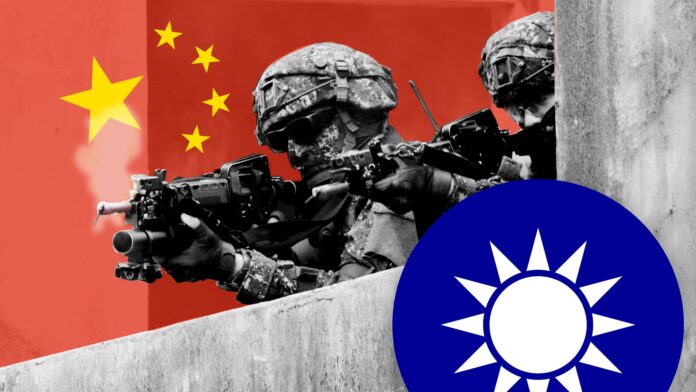In an interview, Taiwan’s foreign minister, Joseph Wu, expressed serious concerns about a potential conflict with China, stating that they are taking the Chinese military threat very seriously and identifying 2027 as a critical year. As tensions between China and the United States continue to escalate, analysts are growing increasingly worried about the possibility of a conflict, with the relationship between Taiwan and the US playing a significant role in influencing China’s decision to annex the self-governing island.
China already possesses the world’s largest armed forces, with approximately 2 million active personnel, and its navy is the largest globally, boasting around 355 active vessels compared to the US’s 296. In recent years, China has been rapidly modernizing its military and pursuing a strategy of “military-civil fusion” to develop a world-class military. This approach involves private businesses supporting the development of military technology, ranging from AI to nuclear technology and drones.
One of the significant challenges in assessing China’s military development lies in the lack of transparency and differentiation between military and civilian operations. China’s shipbuilding industry, exemplified by the China Shipbuilding Group Corporation, accounts for a fifth of global ship production and produces vessels for the Chinese navy. The integration of military and civilian shipbuilding hampers outsiders’ ability to understand and limit China’s military capabilities.
China’s efforts to become self-sufficient in advanced technology, particularly arms manufacturing, have been another prominent trend. With over 90% of its weaponry produced domestically, China has significantly reduced its reliance on foreign suppliers. This self-sufficiency presents a challenge for countries seeking to limit China’s military modernization.
However, despite China’s military might, a potential invasion of Taiwan faces several obstacles. An invasion would likely rely on a naval encirclement of the island, emphasizing the importance of China’s maritime capabilities. Taiwan has recently acquired 400 anti-ship Harpoon missiles from the US, enhancing its defense against a naval assault.
Furthermore, conquering Taiwan would not be possible through shoreline operations alone. With more than 90% of Taiwan’s population residing in cities, both China and Taiwan have been preparing for the possibility of a protracted urban conflict. The PLA has been studying, training, and preparing for future urban warfare, potentially drawing lessons from Russian experiences in Ukraine.
Finally, the PLA’s lack of combat experience poses a significant challenge. The last time China engaged in warfare was during the 1979 invasion of Vietnam. Chinese leaders are aware of this issue and have recently revised conscription laws to allow retired service personnel to re-enlist, aiming to boost troop numbers quickly in times of conflict. However, the PLA’s limited combat experience and cultural challenges, including corruption and a rigid command structure, may impact their effectiveness in a high-stakes military operation.
In conclusion, while China possesses a formidable military, a potential invasion of Taiwan is far from a straightforward task. China faces obstacles such as Taiwan’s strengthened defense capabilities, the challenges of urban warfare, and a lack of combat experience within the PLA. These factors, coupled with cultural and organizational issues, present significant challenges that would need to be overcome for China to successfully annex Taiwan.

